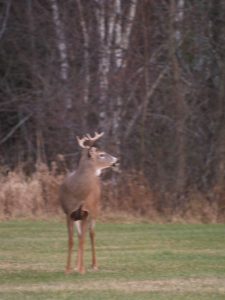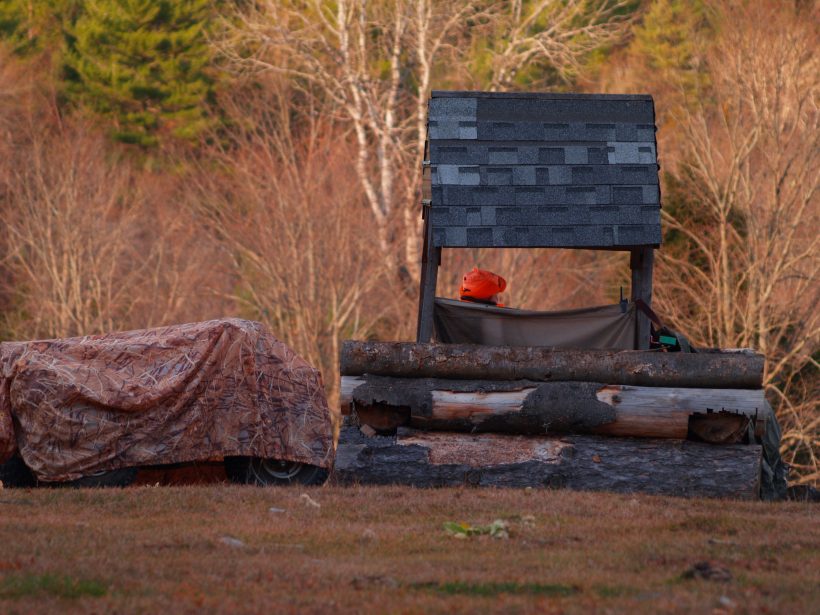
SEPTEMBER 1975
In a bit over a couple of months the annual trek to the hunting camps will be on, but the usual enthusiasm may be missing. True, the idea of being back in camp with cares and worries some distance away will still be nice but the deer hunting has changed so much the last two decades that it is a far cry from what many of the older hunters like to think of as hunting season.
There are several hunting seasons now. We have the upland bird season or seasons, as well as the migratory bird or duck season. Then there is the bear season that starts too early in the fall, and then another open season for bears in the spring. These seasons were well thought out, and are suitable for our changing times, but for many hunting season meant that period in the fall when all else was put aside and many went deer hunting. This activity was not confined to any one group. Men who worked in the saw mills, men who did almost any type of work that paid wages, business men, professional men, made no difference. It was hunting season and that was all that mattered.
In years gone by not much hunting was done on a daily basis where men stayed at home. Part of the thrill was to get back to the hunt camp. I can recall when many wagon loads of hunters and equipment went back into the woods, in the days before cars. Then so many went on the train. For a number of years a special car or cars were set aside for hunters in Toronto, then those cars were shunted onto other lines and hunters went to camp that way, without so much handling of baggage at the Junctions. During, and just after world war one, there were numerous camps between Kearney and Algonquin Park, and the train stopped at each one and let hunters off. I think it would be safe to say that there were more than two hundred deer hunters that went on the train. It meant that the train was quite a meeting place, as hunters that had not met since the previous fall exchanged greetings, compared guns and hounds, and no doubt speculated on what kind of hunt it would be.
Visits to other camps in the fall, when hunters were there was always so interesting.
Most every group of hunters hunted near their own camp, and as a rule no other bunch of hunters hunted there. This was not a hard and fast rule, but it was one of the unwritten agreements amongst hunters that you did not infringe on another territory.
Years ago the first small deer usually wound up on the table in the camp. Most hunters thought that venison tasted better in the woods than at home. Indeed, groups of hunters we have had at camp wanted venison in camp. Years ago no one seemed to care about a deer eaten in the woods, but finally a licence was needed for the deer eaten in camp. That was alright with most of the camps, as there were plenty of deer. Then as deer got scarce the camp licence was discontinued, and if a deer was eaten in camp it meant one hunter did not have a licence to take home a deer. By this time hunter success was dropping drastically, and fewer deer each succeeding year were taken home.
When I first started to hunt deer, which was early in world war one, almost every camp expected to have a 100% hunt. There were years when deer were not so plentiful in particular areas, and some camps would be short a few deer. But over all, for many years, there did not appear to be any drop in the deer herd. In 1918 there were so many deer that hunters were permitted to take two deer. For this privilege the licence fee was raised from two to three dollars. Odd, but the next year we were back to one deer per licence, only for some reason or other they forgot to put the licence back to the previous price.
We still had good hunting, and it was looking like we would always have plenty of deer. Then came that bad winter of 1922-23, and a lot of deer died from starvation. Then those fires in northern Ontario had produced a lot of feed, and our deer just seemed to disappear. One argument was that somehow or other the deer knew of these fires. Whatever the case, deer appeared in those new burned over areas and we had no deer. In the late twenties we had few deer, and many camps simply did not bother to go deer hunting. I know that in some areas when a deer track was seen it was widely told. At that time we did not have people to tell us that the deer had left because there was no feed. But it was openly stated by some that our deer hunting had ended.
The in the early thirties, deer began to return. Not a deer here and there but in groups of five or six, which might mean they were coming back some distance. Too, they came back to the woods just as they had left it, for there had been no fires or wood operations to produce any new growth. Again, some claimed that the new feed in the north had grown out of reach, and the deer had to come back home. At any rate in a few years we had good hunting again, slight set back in 1942, but hunter success continued to be almost perfect until those bad winters of 59-60. Deer got scarce, but we looked for a recovery which did not come. Now deer are about as scarce as they were in 1929.
Into the bargain roads into the woods mean more hunters are looking for deer, and in our area, 30 square miles, besides the 100 to 120 hunters in the registered camps there are in moose season years, and more than that number of transient hunters.
Hunters are taking few deer, and wolves too have few to kill, thought they take more than hunters. But unless something happens that no one expects, deer hunting in East Parry Sound will soon be a thing of the past.
